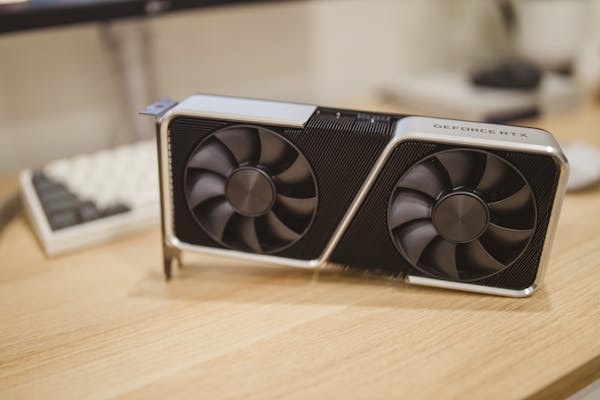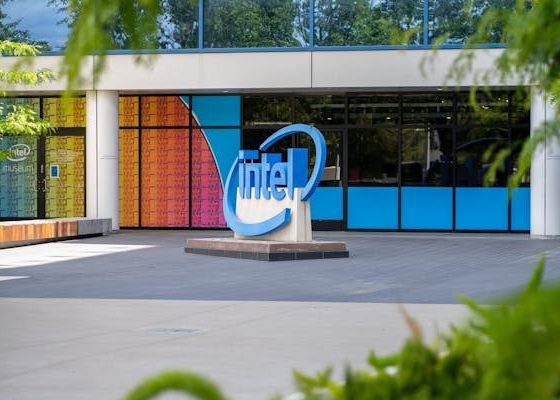
The world of gaming, video editing, 3D rendering, and AI workloads is constantly evolving, and at the heart of these experiences lies the graphics processing unit (GPU). In this year, the demand for powerful GPUs has skyrocketed, as more users want the best graphics card for everything from smooth 4K gaming to professional content creation. Whether you are a casual gamer, a competitive esports player, or a professional creator, finding the best graphics card can significantly improve your experience.
In this article, we will explore the best graphics cards across different price points and performance categories, covering both AMD and NVIDIA models. We’ll break down the key features to consider when purchasing a GPU, analyze the top contenders in the market, and provide recommendations based on specific use cases.
Key Factors to Consider When Choosing the Best Graphics Card
When shopping for the best graphics card, several factors come into play. These are crucial in determining how well a card will perform relative to your specific needs. Here are the most important considerations:
1. Performance
The performance of a graphics card is determined by its architecture, clock speeds, number of cores, and memory bandwidth. High-end GPUs deliver superior performance for tasks like 4K gaming, VR, and rendering complex 3D models. In contrast, mid-range GPUs offer a good balance of price and performance, making them suitable for 1080p or 1440p gaming.
2. Ray Tracing and DLSS
NVIDIA’s RTX series introduced real-time ray tracing, a technology that simulates the behavior of light for more realistic reflections, shadows, and global illumination. Coupled with DLSS (Deep Learning Super Sampling), which uses AI to upscale lower-resolution images, these features dramatically improve performance in supported games. AMD has its own alternative, FidelityFX Super Resolution (FSR), but NVIDIA’s DLSS is considered more mature and widely supported.
3. VRAM (Video RAM)
Video RAM is critical for high-resolution gaming and content creation. More VRAM allows for larger textures and better performance at higher resolutions. For 1080p gaming, 8GB of VRAM is generally sufficient, but for 1440p, 4K gaming, and professional workloads, 12GB or more is recommended.
4. Power Consumption and Cooling
High-performance GPUs can consume significant power, often requiring a robust PSU (Power Supply Unit). They also generate a lot of heat, which necessitates efficient cooling solutions. A GPU with good thermal management will ensure optimal performance without throttling under heavy workloads.
5. Price
GPUs can range from affordable entry-level models to premium high-end cards costing thousands of dollars. Your budget will likely dictate the best graphics card for your setup. However, it’s crucial to find a card that offers the best price-to-performance ratio for your specific needs.
6. Resolution and Refresh Rate
The type of display you’re using also plays a significant role in choosing the right graphics card. If you’re gaming on a 1080p, 144Hz monitor, you’ll need a GPU that can handle high frame rates. For 1440p or 4K displays, you’ll want a more powerful card capable of rendering games smoothly at higher resolutions.
7. Future-Proofing
With each new generation of games and software, the demand for higher GPU performance increases. Opting for a more powerful graphics card today can help ensure that your system remains capable of running newer titles and applications for years to come.
Best Graphics Cards for this Year by Category
Now that we’ve covered the essential factors to consider when choosing the best graphics card, let’s dive into the top picks for different use cases and budgets in this year.
1. Best High-End Graphics Card: NVIDIA GeForce RTX 4090
Key Specifications:
- Architecture: Ada Lovelace
- VRAM: 24GB GDDR6X
- Boost Clock: 2.52 GHz
- CUDA Cores: 16,384
- TDP: 450W
The NVIDIA GeForce RTX 4090 is undoubtedly the best graphics card for those who need unmatched performance. Whether you’re gaming at 4K, using multiple monitors, or working with complex 3D models in software like Blender or Maya, the RTX 4090 handles everything with ease.
It’s built on the Ada Lovelace architecture, which significantly improves performance over the previous Ampere generation. One of the standout features of the RTX 4090 is its support for real-time ray tracing, making in-game environments look more realistic than ever before. DLSS 3.0, which uses AI to enhance image quality while reducing the load on the GPU, further sets this card apart from its competitors.
The downside? It’s incredibly expensive, with a price tag north of $1,600. But if you’re a professional content creator or a hardcore gamer looking for the best, the RTX 4090 is the ultimate solution.
2. Best Mid-Range Graphics Card: AMD Radeon RX 7800 XT
Key Specifications:
- Architecture: RDNA 3
- VRAM: 16GB GDDR6
- Boost Clock: 2.4 GHz
- Stream Processors: 4,608
- TDP: 270W
For gamers who want excellent performance without spending over a thousand dollars, the AMD Radeon RX 7800 XT is the best graphics card in the mid-range category. Built on AMD’s RDNA 3 architecture, this GPU offers excellent performance at 1440p and even 4K with some tweaks to settings.
The RX 7800 XT supports AMD’s FSR 3.0, which, while not as advanced as DLSS 3.0, offers a good alternative for improving frame rates in demanding games. It also performs well in productivity tasks, especially for users who rely on OpenCL-based applications.
At around $500, the Radeon RX 7800 XT is an excellent value for the money, delivering high performance without breaking the bank. It’s particularly well-suited for gamers who want a powerful card that can handle most modern games at high settings and resolutions.
3. Best Budget Graphics Card: NVIDIA GeForce RTX 4060
Key Specifications:
- Architecture: Ada Lovelace
- VRAM: 8GB GDDR6
- Boost Clock: 1.8 GHz
- CUDA Cores: 3,072
- TDP: 160W
For gamers on a budget, the NVIDIA GeForce RTX 4060 is the best graphics card you can buy. While it doesn’t deliver the same blistering performance as the higher-end RTX models, it still offers ray tracing and DLSS support, making it an excellent choice for 1080p gaming.
The RTX 4060 performs admirably in esports titles like Valorant, CS, and League of Legends, where frame rates are critical. In more demanding AAA titles, the card can still deliver smooth performance at medium to high settings in 1080p. The card’s lower power consumption is also a plus, as it doesn’t require a high-wattage PSU and generates less heat.
Priced at under $300, the RTX 4060 is perfect for gamers who want decent performance without emptying their wallets.
4. Best Graphics Card for 1440p Gaming: NVIDIA GeForce RTX 4070 Ti
Key Specifications:
- Architecture: Ada Lovelace
- VRAM: 12GB GDDR6X
- Boost Clock: 2.6 GHz
- CUDA Cores: 7,680
- TDP: 285W
For gamers who prefer 1440p resolution, the NVIDIA GeForce RTX 4070 Ti is the best graphics card in this year. This GPU offers an excellent balance between performance and price, making it ideal for 1440p gaming at high refresh rates. With support for DLSS 3.0 and ray tracing, it’s future-proof for upcoming game titles, ensuring that you’ll be able to run the latest releases without compromise.
The 12GB of GDDR6X VRAM ensures that the RTX 4070 Ti can handle large textures and complex scenes in modern games. It also excels in productivity tasks, such as video editing, thanks to NVIDIA’s CUDA cores and advanced AI features.
At around $800, it’s not cheap, but for gamers who want a high-performance card for 1440p gaming, the RTX 4070 Ti is the best choice.
5. Best Graphics Card for 4K Gaming: AMD Radeon RX 7900 XTX
Key Specifications:
- Architecture: RDNA 3
- VRAM: 24GB GDDR6
- Boost Clock: 2.5 GHz
- Stream Processors: 6,144
- TDP: 355W
The AMD Radeon RX 7900 XTX is an excellent alternative to NVIDIA’s high-end offerings for those looking to game at 4K. Built on the RDNA 3 architecture, the RX 7900 XTX delivers exceptional performance at 4K resolution, allowing you to play AAA titles like Cyberpunk 2077 and Red Dead Redemption 2 at ultra settings.
With 24GB of GDDR6 VRAM, this GPU is also ideal for content creators who need a powerful card for rendering, video editing, and 3D modeling. Its robust memory bandwidth ensures that even the most demanding workloads can be handled smoothly.
At $1,000, it’s more affordable than NVIDIA’s RTX 4090 but still offers top-tier 4K performance, making it one of the best graphics cards for high-resolution gaming and professional use.
6. Best Graphics Card for Content Creation: NVIDIA RTX A6000
Key Specifications:
- Architecture: Ampere
- VRAM: 48GB GDDR6 ECC
- Boost Clock: 1.8 GHz
- CUDA Cores: 10,752
- TDP: 300W
For professional creators who require the absolute best performance in tasks like 3D rendering, video editing, and AI workloads, the NVIDIA RTX A6000 is the best graphics card available. This card is designed for workstations and offers unparalleled performance in software like Adobe Premiere, Blender, and DaVinci Resolve.
With 48GB of ECC (Error-Correcting Code) GDDR6 memory, the RTX A6000 can handle massive datasets, 8K video projects, and complex 3D models without breaking a sweat. While it lacks the gaming-specific features of the RTX series, such as DLSS and ray tracing for gaming, its raw power in professional applications makes it the ultimate tool for creators.
Priced at around $5,000, the RTX A6000 is not for casual users. It’s a specialized tool for professionals who need the absolute best in productivity performance.
Honorable Mentions: Other Great Graphics Cards
While the cards listed above represent the top picks in their respective categories, several other GPUs deserve mention for offering excellent performance at various price points.
1. AMD Radeon RX 7600
The RX 7600 is a great entry-level GPU for 1080p gaming, offering solid performance for budget-conscious gamers. Priced around $270, it competes directly with NVIDIA’s RTX 3060.
2. NVIDIA GeForce RTX 4080
For those who want something between the RTX 4070 Ti and the RTX 4090, the RTX 4080 is a powerful choice for 4K gaming and content creation. At around $1,200, it delivers excellent performance without reaching the extreme pricing of the RTX 4090.
3. AMD Radeon RX 7700 XT
Sitting between the RX 7600 and RX 7900 XTX, the RX 7700 XT is a fantastic option for 1440p gaming. It offers strong performance at a price point of about $450, making it a compelling alternative to the NVIDIA RTX 4060 Ti.
Conclusion
The best graphics card for you in this year depends on your budget, performance needs, and specific use case. High-end users will find unmatched performance in cards like the NVIDIA GeForce RTX 4090 and AMD Radeon RX 7900 XTX, while mid-range and budget-conscious buyers have excellent options like the NVIDIA RTX 4060 and AMD RX 7800 XT. For professionals in content creation, the NVIDIA RTX A6000 remains the king of workstation GPUs.
In the end, the key is to balance your needs with your budget. Whether you’re gaming at 1080p, 1440p, or 4K, or if you’re a professional looking for the ultimate in productivity, there’s the best graphics card out there to suit your needs.


